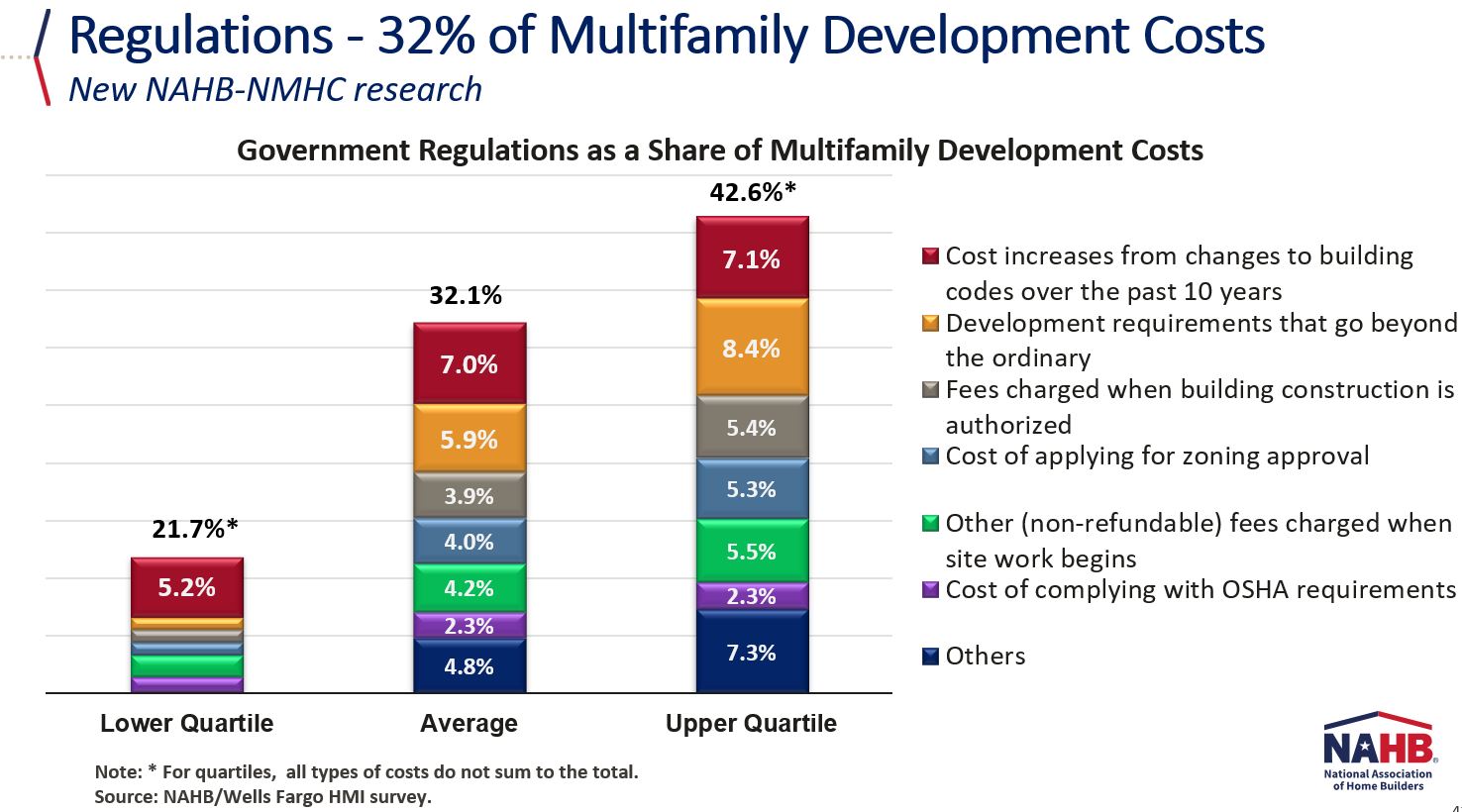This website uses cookies so that we can provide you with the best user experience possible. Cookie information is stored in your browser and performs functions such as recognising you when you return to our website and helping our team to understand which sections of the website you find most interesting and useful.
News
The High Regulatory Cost of Home Building
New research from the National Association of Home Builders (NAHB) offers a stark reminder of the high cost of regulatory requirements in the housing sector.
The data reveal that the costs of building codes, land use, environmental regulations, and other federal, state, and local requirements rose up to 29 percent between 2011 and 2016. These include both preconstruction costs and regulatory costs incurred during construction.
For multifamily development, regulatory costs are even higher—up to an estimated 32 percent, according to data from the NAHB and the National Multifamily Housing Council. These costs include, among others:
- Compliance with building codes
- Fees for building construction
- Zoning
- OSHA requirements
Regulations are just one housing headwind.
Adding approximately 30 percent in regulatory costs to the price of a new home or new multifamily construction is significant. In itself, it makes home buying less affordable – and continues to threaten the pace of new construction.
But regulation is not the only housing headwind. The latest NAHB research also reveals that prices for softwood lumber have been extremely volatile and are expected to rise in 2019. Meanwhile, a labor shortage in both manufacturing and construction are squeezing the market for skilled workers. In the construction sector alone, there were 360,000 unfilled jobs in March 2019. Finally, housing sector watchers remain concerned about a slowdown in the growth of loans amidst concerns that access to credit could tighten further.


